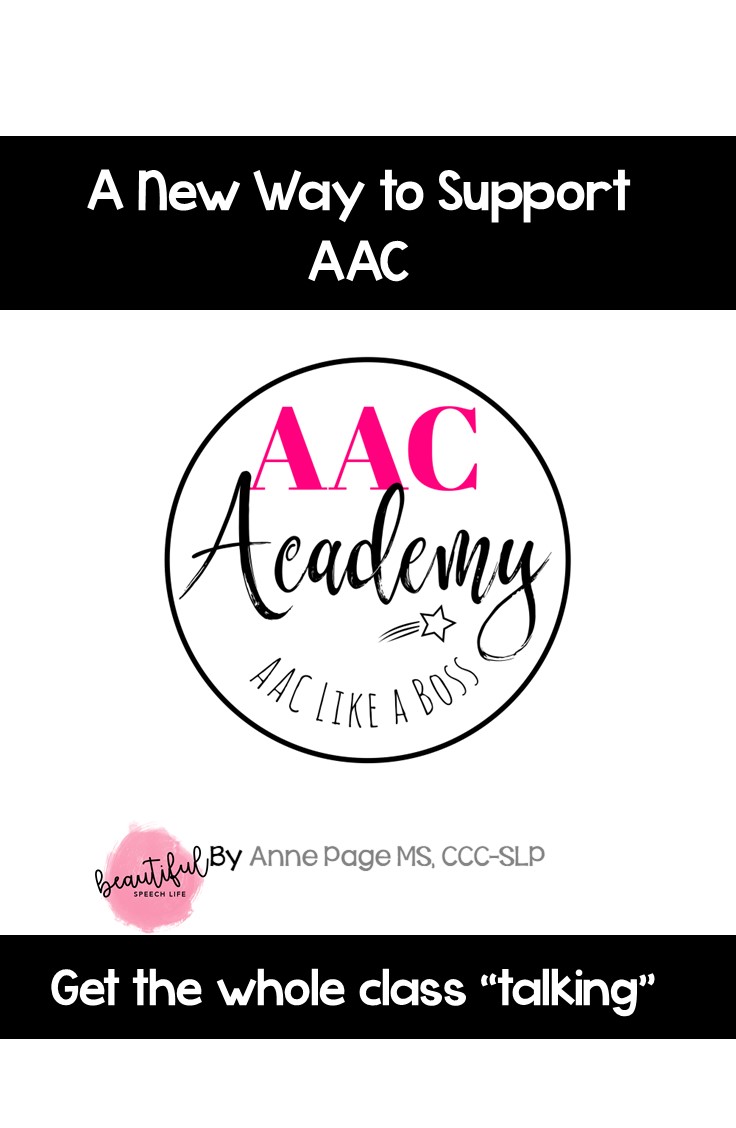One of my strongest beliefs is that all children with complex communication needs should have access to support regardless of their background. As SLPs we have an important role to play in ensuring this.
But I know it can feel intimidating at first. Particularly if you’re also navigating AAC for the first time. I recently did an interview with Tamara Anderson from Building Successful Lives on this topic. You can find the interview here: https://www.youtube.com/watch?v=zeVMsp3xv-4
If video isn’t your thing, I’ve summarised why this is important to me and ways to support your students.
Why is getting AAC to all children who need it important?
It’s not just Alternative!
AAC has two AAs. But we focus on the alternative rather than the augmentative. It’s supporting the child with what they already have. If the child has very limited verbal speech then using AAC can be a bridge to developing bigger language skills.
It can also provide an alternative way for the child to communicate when they’re having a communication breakdown or when they’re really tired. I often see students with autism who under times of great stress or during times of sensory overload find visual communication easier than using verbal speech.
It’s important not to wait. We want to get AAC into a kid’s hands as soon as we think they need it. They can start building those important language skills straight away so they’re not behind.
Advocating for and creating diverse materials for AAC users with complex communication needs
There is so much you can do as an SLP in advocating for and creating diverse materials.
1. View the child as a whole. The first place I like to start is by creating a climate and environment where we’re viewing each child as a whole. This means not just looking at his disability or where he needs help with communication. It also means what environments are they communicating in at school and at home. This is going to be a way for them to communicate wherever they are, so thinking about that is a great place to start.
2. Include language spoken at home. We used to think that it was confusing for the child if they were using multiple languages. Studies have now shown this isn’t the case. Children with complex communication needs can be bilingual or even multilingual. This ties back into viewing the child as a whole. We don’t want to alienate parents from children. We want children to embrace their home life and culture.
Don’t just think about the language but also the different phrases they might use at home. There is a lot to think about. Words don’t always translate directly. You might find it difficult to find a translator if the language used at home isn’t a common language in your community. But I promise your efforts will be rewarded.
3. Appropriate icons and symbols. Can your children see themselves reflected in their apps and core boards? The skin tone of the symbols can play a part in this. In the last year some of the big AAC companies (Touchchat and Proloquo2go) are making it so much easier for us as SLPs to adjust the symbols in one step. Others are coming on board so keep an eye on the website of the apps your students are using.
4. What voice are you using? If you are using computer generated voices can you choose one to sound as much like the student would sound if they could speak? Acapela Group is doing wonderful work to create more diverse voices.
Increasing the language and literacy of AAC users
As well as the bigger picture activities listed above there are simpler actions we can take to increase the language and literacy of AAC users:
· Modelling. I talk a lot about the importance of modelling. That is we as the communication partner use the communication device as well. Even if you only have a core vocabulary board you can point too.
· Incorporating words. Your student may not be able to read, but they can often recognise words. If you’re doing a visual schedule you can still add words as the student can recognise what words are. They can have letter awareness.
We can also encourage playing with letters. This could be through playing with magnet letters or using a keyboard.
· Give them the gift of story. We all have wonderful stories to share and giving students the gift of story is one of my favourite things to do. To start, have some active engagement in books. Get creative and make it fun. If children have been read to in a boring way when they see a book come out they think it’s time to go to sleep.
See if you can figure out how to make it fun and exciting. I like using puppets, the Tarheel Reader site, and interactive books with velcro pieces. It’s all about not being boring. Children understand the power of stories.
Just like with any kid we want to find a book that the child is interested in. For example, If a child likes cars then find a book on cars.
Next Steps
If you’ve enjoyed this blog post and are looking for ways to build on your knowledge then some great ways to do this are:
- Reach out to other SLPs in your region or even on social media. On Instagram search on the hashtag #AAC. There are amazing SLPs on Instagram sharing all about AAC.
- Take some courses. Look for courses offering practical advice. Like my AAC Academy Jumpstart.
- You can get so hung up on AAC and how complex it is. But at the end of the day… it’s just language and we know what language is. Look at the child and see where they are in their communication skills. All kids are communicating even if not verbal. Figure out what the next step is. Where do you want them to get?
- Work out how the device works – google the devices – there are lots of videos out there. Reach out to other SLPs if you get stuck.
- If a student needs a device and they don’t have one, do you have an AAC specialist in your district and what is the policy? Start doing the research. We don’t want our students to miss out.
It may all seem very daunting but it’s the best feeling when you can give a voice to a student and a family.
Pin to read later:



 Hey there I’m Anne Page. I help heart centered SLPs and educators put the fun in functional communication.
Hey there I’m Anne Page. I help heart centered SLPs and educators put the fun in functional communication. 